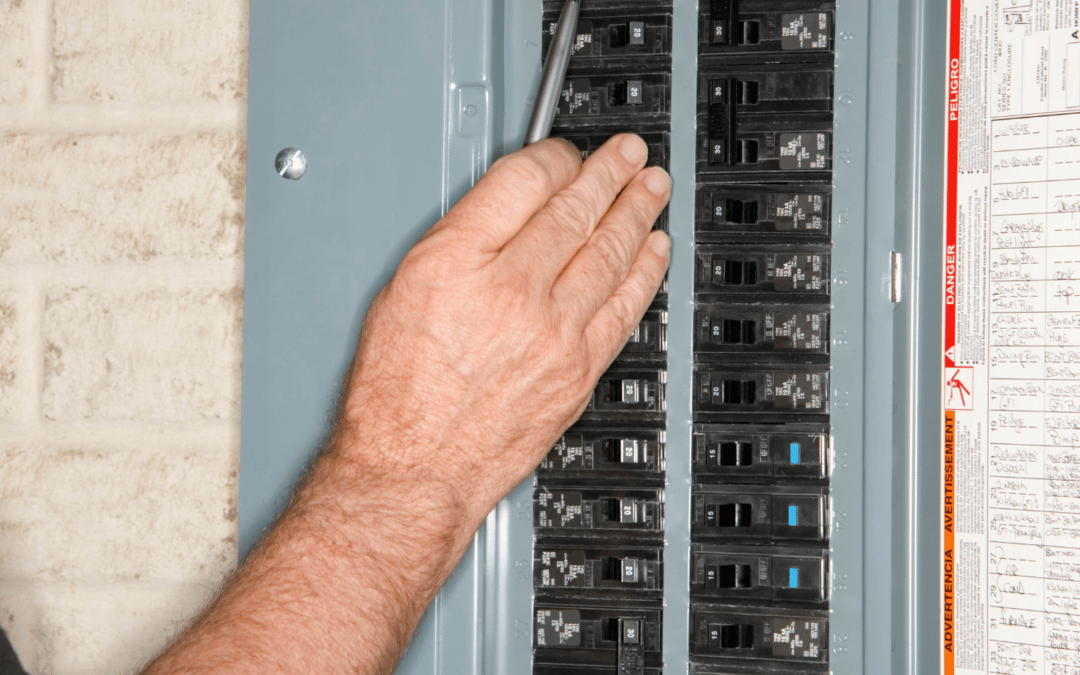If you’ve ever had an appliance stop working right in the middle of using it, you know how frustrating it can be to experience electrical problems in your home. Electrical failure can be caused by something as simple as a tripped circuit breaker or as complex as faulty or outdated wiring. Electrical troubleshooting is a carefully planned process of elimination that helps you determine the root cause of a problem.
Because a home electrical wiring system is complicated, you may wind up needing an electrician to solve the problem. However, if you want to try to find the source of the problem yourself, there are some straightforward techniques and questions to ask to troubleshoot your electrical problem.
Remember, safety first! Always ensure that you are not encountering live wires.
1. Does the Device Work?
First, be sure that the device itself is plugged in or that the light bulb isn’t burned out. Plug another working item into the outlet to determine if electricity is flowing.
2. Is the Problem Local or Widespread?
Does the problem involve just one outlet or is the power out in your home? Electrical outages throughout the house are usually related to a problem with the power company. Check to see if your neighbors are experiencing outages as well.
3. Check the Breakers and Fuses
Circuit breakers are designed to shut off the power when a circuit is overloaded to prevent fire or electrical shock. Sometimes you can solve the problem by disconnecting a device from the circuit and flipping the breaker back on.
4. Check the Electrical Schematic Drawings
These drawings are a map of the electrical wiring in the home and show how the circuits are divided. They may help you pinpoint the problem circuit.
5. Shut Down the Problem Circuit
This is important! Once you’ve located the faulty circuit, be sure to shut it down as a crucial safety precaution. It’s wise to mark the circuit to let others know you’re working on it so it won’t be accidentally reset and possibly cause an electrical shock.
6. Locate the Trigger
Once the circuit is down, inspect the area of your home to locate the item that triggered the breaker trip. Sometimes too many items plugged into a circuit or something like a hair dryer or space heater is the culprit.
7. Check the Switch
Check the electrical switch with an OHM meter to rule out the possibility that it is faulty or broken.
8. Inspect Connections
After ensuring the power is off, check the electrical connections to be sure there is nothing loose causing a short.
9. Inspect Neutral Wires
Check all neutral connections at the source and at any junction leading to the problem area. If a hot wire doesn’t test okay to a neutral wire, it can shut the whole circuit down.
10. Call an Electrician
If your troubleshooting has been fruitless or you are unsure or uncomfortable about proceeding, call a professional electrician to solve the problem!
How can we help?
At Shockley Electric, we address important home safety issues such as power surges, faulty electrical wiring, and potential fire hazards when we do electrical preventive maintenance in homes or commercial buildings. We are licensed, trained, and skilled in safety-proofing your home, and we are committed to the safety and well-being of our customers.
If you are experiencing electrical problems in your home or aren’t sure if your home is protected from electrical hazards, schedule an in-home estimate or appointment with us today. Fill out our form or call us now for a free estimate!

